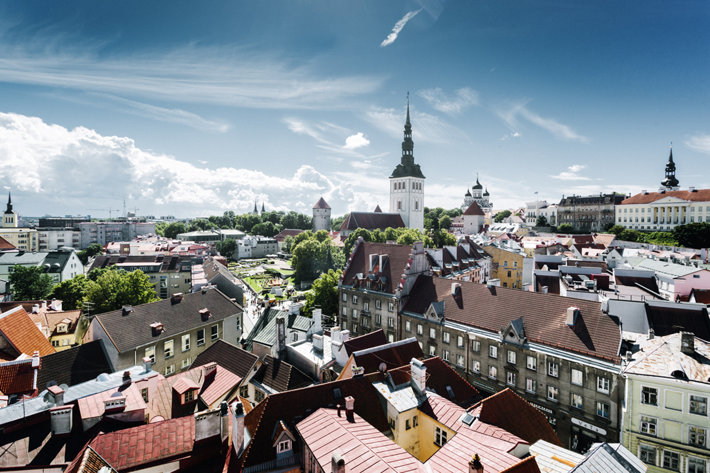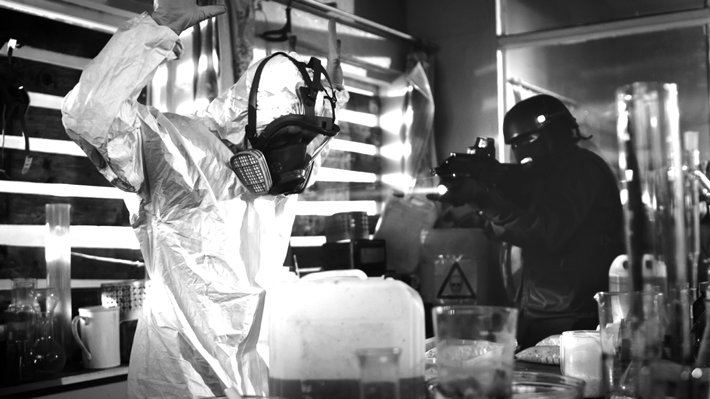Estonia’s Fentanyl Epidemic

Estonia is a Northern European country comprised of the mainland and 2,222 islands in the Baltic Sea. With a population of a little over 1,300,000, this small country is recognized as one of the most advanced digital societies in the world and has an adult literacy rate of 99.8%. Estonia is portrayed as “lively, yet peaceful” and “absurdly photogenic” by a travel guide and even has free public transportation.
Yet, there is one fact that does not fit within the context of these alluring descriptions and seems to be dramatically opposed.
Estonia has the highest rate of drug overdoses in Europe.
How can this be?
The Overdose Situation in Estonia
Estonia consistently ranks at the top or near the top for being the European country with the highest proportion of its citizenry who die from drug overdoses.
According to a report in the International Drug Policy Consortium, Estonia suffered 110 drug-related deaths in 2017, representing about 130 deaths for every 1 million people ages 15 to 64. Sweden ranked second in drug-related deaths with a rate of 92 deaths per 1 million people in the same age group. And Norway's drug-related death rate was 74 deaths per 1 million. Estonia's death toll ranked 1st place at roughly six times higher than the EU average of 23 per million.
Illegally acquired prescription drugs, mainly fentanyl and other opioid painkillers, were to blame for the overdose deaths until 2017. Then other drugs started to hit the scene—but more about that later.
(For more information, the International Drug Policy Consortium also cites the European Drug Report, a document that has more detailed statistics on Estonia's overdose crisis).
Drug Addiction in Estonia

Several factors have contributed to Estonia's high addiction rates and resulting overdose deaths.
Opioid prescribing by medical doctors rose steadily over the past decade. According to a study published in the journal Pharmacology Research & Perspectives, annual opioid prescribing rates in Estonia increased significantly from 2011 to 2017. During the same period, opioid overdoses also began to rise. Quoting the study authors, "During the study period there was a 128% increase in the use of weak (codeine, dihydrocodeine, tramadol) and 164% in the use of strong opioids (morphine, oxycodone, fentanyl). The consumption of codeine increased about 400%, consumption of oxycodone, dihydrocodeine, and fentanyl increased more than twofold."
Increased prescribing was not the only factor, however.
In earlier years, fentanyl replaced heroin on the streets after the Taliban banned poppy production in Afghanistan in 2001[MR1]. As a result, the number of overdose deaths started to increase – fentanyl is more deadly than heroin.
Clandestine fentanyl production labs cropped up in Estonia, especially during the same period that opioid prescribing began to rise. This situation, more than anything, led to a surge in overdose deaths. Of all opioid types, fentanyl was the most found substance in post-mortem toxicology reports.
“A massive law enforcement surveillance operation led to a
clandestine laboratory hidden beneath a staircase in a
brick home outside Tallinn...”
When Estonian police managed to crack down on the fentanyl supply, overdose deaths dropped. Quoting Erika Kinetz, who writes for AP News, “A massive law enforcement surveillance operation led to a clandestine laboratory hidden beneath a staircase in a brick home outside Tallinn. It was one of two major busts by police that year that effectively cut off fentanyl supplies to the tiny nation. Police seized nearly 10 kilograms of fentanyl that year, up from 314 grams in 2016. Overdose deaths plunged after the busts.”
When fentanyl was taken off the street by the police, drug users looked for other ways to get high. In 2017, overdose deaths in Estonia started to creep back up again as addicts turned to other dangerous and addictive substances. In attempts to avoid withdrawal symptoms, addicts began looking for other alternatives -one of them is Alpha PVP, a drug from Russia. Others started injecting mixtures of synthetic drugs like amphetamines, tramadol and sleeping pills. This situation and “unidentifiable mystery drugs” are well described in an ABC News article from March 2020.
Aljon Kurbatova, head of the Infectious Diseases and Drug Abuse Prevention Department of the National Institute for Health Development, expands the view of addiction in Estonia. He pointed out that he believes that the number of injectable drug users in Estonia has not increased from its 2015 number of 8600 - a younger generation of injectable drug users is not coming along. “The average age of injectable drug users has steadily increased," he stated in an EER News article.
In other words, it appears to be generally the same population of injectable drug users in Estonia, who have remained heavily addicted through the years, going from drug to drug.
Though Estonian public officials and law enforcement officers were able to slow the surge of opioid overdose deaths by shutting down clandestine drug labs, interdiction alone is not the solution, as evidenced by the data. There is still a population of addicts continuing to inject drugs in Estonia. They need effective drug treatment.
Addiction Treatment—The Solution to Drug Abuse in Estonia

Public health experts and Estonian citizens should be applauded for their efforts thus far in curbing the availability of fentanyl. These efforts have reportedly prevented more young people from becoming injectable drug users. The actions that led to these improvements should be reinforced.
But what about the thousands still suffering from addiction, many who have been in and out of jail? Opioid addiction can seem impossible to beat, especially without the proper help. An addiction to drugs and alcohol is not something that people can break free from on their own, as evidenced by the merry-go-round of drugs and drug mixtures that drug abusers find themselves on in Estonia. These drug abusers need professional help to get off the merry-go-round.
Addiction can be overcome with effective residential drug treatment. Treatment remains the most successful, reliable and effective means for helping a recovering addict create a drug-free life.
Effective treatment must be comprehensive. And that means a rehab program that can address addiction's physical, psychological, behavioral, and spiritual aspects. Leaving any of these stones unturned can set the stage for a potential relapse later.
Narconon offers a practical, time-tested, and proven drug rehab program that works. If you know someone in Estonia who struggles with an addiction to drugs or alcohol, please contact Narconon today. Please do not wait until it is too late. Don't let your loved one contribute to Estonia’s fatal overdose crisis.
Sources:
- https://idpc.net/alerts/2019/11/how-estonia-became-the-drug-overdose-capital-of-europe
- https://www.emcdda.europa.eu/edr2019_en
- https://www.ncbi.nlm.nih.gov/pmc/articles/PMC7105842/
- https://apnews.com/article/be15d6289f39b45742d598f6f65185ce
- https://www.worldometers.info/world-population/estonia-population/
- https://www.thelancet.com/journals/lanpsy/article/PIIS2215-0366(19)30436-5/fulltext
- https://news.err.ee/1114183/fentanyl-has-made-a-return-to-the-estonian-drug-market
- https://www.lonelyplanet.com/estonia
- https://abcnews.go.com/Health/wireStory/estonia-won-war-fentanyl-things-worse-69807169

